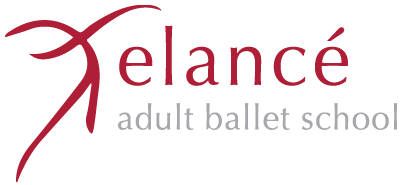

Warming up; it’s a term we all know and an activity that we may or may not engage in to varying degrees on a weekly basis. But what is warming up? And how do you warm up effectively? And finally, does it really matter? Well, yes, it really does matter and if you routinely make it a part of your adult ballet class, you and your teacher will notice the benefits.
Being warmed up for class means having your muscles and your mind in a state of readiness for when your teacher begins. The mad dash from the car to the studio, though all too familiar, is not an effective preparation for what you are about ask of your body! The following four elements are essential for being ready to enter the world of ballet and ensuring you get the best out of your adult ballet class and yourself.
Heart rate
Getting your heart rate going is a must for a ballet class. The previously mentioned dash from the car will do that but it will also bring the slightly panicked feeling of being late. An increased heart rate in a controlled situation will pump your blood around your body and wake up all areas, including those freezing extremities.
A jog on the spot (with articulation through those feet!) for a few minutes will energise your body and prepare it for some more directed warm up exercises. Whilst it might feel like too much effort to jog, remember you have turned up to participate in an adult ballet class! You should be prepared to put in the effort!
Full body warm up
It is a misconception (and one that teachers see in action all the time!) that you only need to warm up your legs and feet for your ballet class. Every part of your body should be energised and ready to go. If you consider the very start of class and think about how you are using your arms, body and head as well as your legs to stand properly without movement, then it makes sense to warm up the body in its entirety.
When you have finished your jog, start your directed warm up exercises with your feet and ankles and then work your way upwards, using your muscles to articulate every joint. Once you have worked an area keep going back to it briefly so you don’t lose the benefits of the work you have put in. You don’t want finish with some neck and shoulder rolls to discover that your feet are cold again! And it’s good to punctuate each area with a quick jog to keep the blood moving. These movements don’t have to be fancy! They just have to be effective.
Stretching
Stretching before class does have its place, though only using stretching for a warm up is not good for your body. Stretching in your warm up regime should only be done once you have increased your heart rate and executed some directed warm up exercises. This type of stretching is not about lengthening muscles, but rather easing them after use.
The muscle should be taken to the point of the stretch and then held for a short period, no longer than ten seconds. Anything longer and you risk the muscle releasing into the stretch and then not firing properly during class. Leave the long stretches for after class when you no longer need your muscles to execute your technique.
Mental preparation
This final element is as important as the rest. A clear and prepared mind will help you to focus and deliver your best work in your adult ballet class. The soothing repetition of warming up your body has a direct flow-on effect to preparing your mind for class. With a focused mind you will notice how your body is moving through space and this will help you to “dance in your body” rather than “dance in your head”, an essential skill for your development as a dancer.
Whilst a good warm up routine may seem like a lot of effort at first, it will become a practice as necessary as putting on your ballet shoes, requiring as little as ten minutes. The immediate benefits include feeling more centered with better balance in your class, and in the long term you will improve at a faster rate. Best of all, you’ll be alert and prepared to take on whatever your teacher may send your way.
